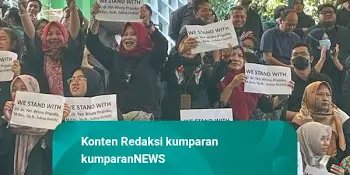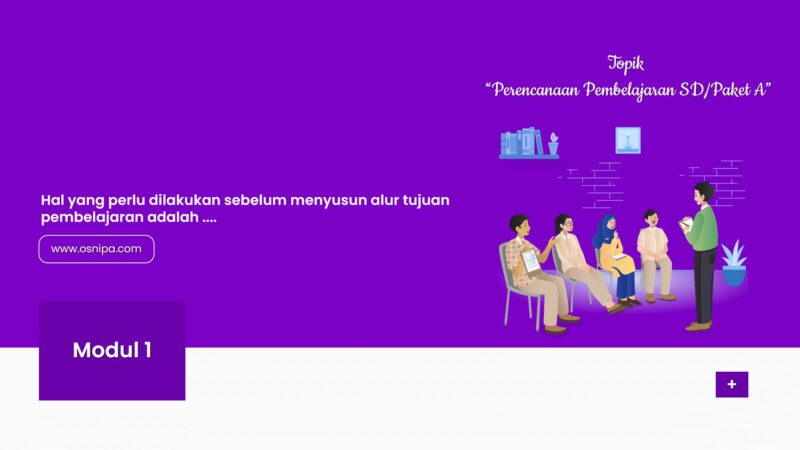Pendidikan Berkualitas: Berikut Ini Yang Tidak Dilakukan Pendidik Ketika Meminta Peserta Didik Untuk Melakukan Refleksi

Engaging students in reflection is vital for their growth, but educators sometimes miss the mark. Instead of creating an open space for genuine introspection, they often focus on rigid structures or overwhelming prompts. This stifles the very purpose of reflection, making it a mere checklist rather than a meaningful exercise. Berikut ini yang tidak dilakukan pendidik ketika meminta peserta didik untuk melakukan refleksi can serve as a guide for creating more effective reflective practices in the classroom. By understanding what not to do, educators can foster a more supportive environment that truly encourages thoughtful reflection.
Berikut Ini yang Tidak Dilakukan Pendidik Ketika Meminta Peserta Didik untuk Melakukan Refleksi
When educators ask students to reflect on their learning experiences, they intend to promote critical thinking, self-awareness, and personal growth. However, several practices can undermine the effectiveness of this process. In this article, we will explore what educators should avoid doing when encouraging student reflection, emphasizing the importance of creating a supportive and engaging environment.
Understanding Reflection in Education
Before delving into what not to do, it’s essential to understand what reflection means in an educational context. Reflection involves thinking critically about one’s experiences, learning from them, and applying that knowledge to future situations. It encourages students to:
- Analyze their thoughts and feelings about what they learned.
- Identify strengths and weaknesses in their understanding.
- Set goals for future learning experiences.
- Develop a deeper connection to the subject matter.
Reflection helps students become active participants in their education. However, if educators fail to create the right atmosphere or provide appropriate guidance, the reflection process may not yield the desired results.
Not Providing Clear Guidelines
One common pitfall is failing to provide clear guidelines for the reflection process. When educators ask students to reflect without specific directions, it can create confusion and frustration. Here’s why this is problematic:
- Lack of Focus: Students may struggle to understand what aspects of their experience they should focus on.
- Ineffective Reflection: Without guidance, reflections may be superficial and fail to promote deeper learning.
- Low Engagement: Students might feel disconnected from the process if they don’t understand its purpose.
To avoid this, educators should provide structured prompts or questions that guide students in their reflection. For example, instead of simply asking, “What did you learn today?” they might ask, “How did the group project help you understand teamwork, and what role did you play in that success?”
Neglecting Individual Differences
Every student is unique, and their approaches to reflection will vary accordingly. Some students may thrive in open-ended reflection assignments, while others may require more structure. Ignoring these differences can lead to disengagement and frustration. Consider the following:
- Learning Styles: Students may process information differently depending on their learning styles. Some might prefer writing, while others benefit from discussions or visual aids.
- Emotional Readiness: Not all students feel comfortable sharing personal reflections. Forcing them to do so can create anxiety and withdrawal.
- Diverse Backgrounds: Students come from various cultural and social backgrounds, influencing how they view learning experiences.
Educators should strive to create a flexible reflection process that accommodates various needs. This may include offering multiple formats for reflection, such as journals, art projects, or group discussions.
Not Modeling Reflection
To encourage students to engage in meaningful reflection, educators must model the behavior themselves. When teachers share their own reflections, they demonstrate vulnerability and openness, creating a safe space for students to express their thoughts. Failing to model reflection can lead to several issues:
- Lack of Trust: Students may feel that their reflections are less valid if educators do not share their experiences.
- Missed Learning Opportunities: Teachers can use their reflections to highlight learning moments and lessons, enhancing students’ understanding.
- Inauthenticity: If students perceive that reflection is just a task, they may not see its value or relevance in their personal lives.
Educators should take the time to share their reflections in appropriate contexts, discussing challenges, successes, and lessons learned from their teaching experiences.
Overemphasizing Grades
When reflection becomes tied too closely to grades or performance evaluations, it can inhibit honest self-assessment. Students may shy away from true reflection and instead focus on what they think teachers want to hear. Here are the dangers of this approach:
- Fear of Failure: Students may be reluctant to discuss mistakes or areas for improvement if they fear academic repercussions.
- Surface-Level Responses: To avoid repercussions, students might provide generic responses that lack depth and critical thought.
- Reduced Motivation: When students feel that reflection is merely a tool for grading, they may disengage from the process entirely.
Instead, educators should emphasize the value of reflection as a tool for growth rather than a judgment of performance. This can include using formative assessments that focus on learning and development rather than solely on grades.
Ignoring Feedback Loops
Reflection is not a one-time activity but should be part of an ongoing feedback loop. When educators fail to create opportunities for students to receive feedback on their reflections, it limits learning. The absence of feedback can lead to the following:
- Stagnation: Students may not know how to improve their reflective practices without guidance and feedback.
- Misunderstanding: Students might misinterpret their reflections without feedback from educators to clarify key concepts or themes.
- Lack of Motivation: Without feedback, students may feel their efforts are not valued or recognized, leading to decreased motivation.
To foster growth, educators should provide constructive feedback on reflections, guiding students on how to enhance their thinking and analysis in future reflections.
Failing to Encourage Collaboration
Collaboration can enhance the reflection process, as students often learn from each other’s perspectives. However, if educators do not facilitate collaborative reflection opportunities, they miss out on valuable learning experiences. The drawbacks include:
- Limited Perspectives: Students might only reflect from their viewpoint, which can limit understanding of various approaches or ideas.
- Reduced Community: Reflection in silos can create a sense of isolation among students, whereas collaboration fosters a supportive learning community.
- Missed Learning Opportunities: Group discussions can spark deeper insights and promote critical thinking.
Educators should implement structured group reflection activities, such as peer review or small group discussions, where students share and learn from each other’s reflections.
Not Creating a Safe Space for Sharing
For students to engage in meaningful reflection, they need to feel safe sharing their thoughts and feelings. If educators fail to create this safe space, students may hold back their honest reflections. This can result in:
- Inhibited Expression: Students may fear judgment or ridicule, which can stifle their willingness to share valuable insights.
- Lack of Authenticity: Students may provide inauthentic reflections if they feel they cannot speak freely.
- Emotional Distress: The fear of sharing can lead to anxiety and stress, which detracts from the learning experience.
To create a supportive environment, educators should establish ground rules for sharing, encouraging respect, empathy, and active listening.
Neglecting Follow-up on Reflections
Reflection should lead to action. When educators fail to follow up on students’ reflections, they miss opportunities for growth and learning. Not following up can lead to:
- Disconnection: Students may feel their reflections are meaningless if not followed by actions or discussions.
- Missed Learning Application: Without follow-up, students may struggle to apply their insights to future situations.
- Reduced Accountability: Students might not take their reflections seriously if they know that no one will address them.
Educators should implement strategies that encourage students to act on their reflections, whether through goal-setting, revising work, or making specific changes in future projects.
Promoting reflection in the classroom can significantly enhance student engagement and learning. However, educators must avoid common pitfalls to ensure that the reflection process is valuable and constructive. By providing clear guidelines, acknowledging individual differences, modeling reflection, and creating an environment that encourages openness and collaboration, educators can foster a rich reflective practice that benefits every student. Focusing on these aspects will not only enhance the learning experience but also help students develop essential skills for their future.
Kunci Jawaban POST TEST Topik Perencanaan pembelajaran SMP/paket B Modul 3 #sekolahpenggerak #pmm
Frequently Asked Questions
“`html
What should educators avoid when guiding students in reflection activities?
Educators should avoid being overly directive or prescriptive in the reflection process. Instead of telling students exactly what to think or how to feel, they should encourage open-ended responses that allow students to express their thoughts and experiences freely. This fosters a more authentic and personal reflection experience.
How can educators ensure students feel safe during reflection exercises?
To create a safe environment for reflection, educators should avoid judgmental comments or critiques during discussions. They should encourage a culture of respect and openness, where all contributions are valued. Establishing ground rules can help maintain a supportive atmosphere, allowing students to share without fear of negative feedback.
What role does feedback play in student reflections?
While feedback is important, educators should refrain from giving excessive feedback immediately after reflections. Instead, they can allow students to reflect on their own thoughts before initiating a discussion. This approach enables students to process their reflections independently before considering external input.
How can educators prevent overwhelming students during reflection?
Educators should avoid providing too many prompts or questions at once. Instead, they can focus on a single question or theme for reflection, allowing students to dive deeply into one aspect without feeling overwhelmed. This encourages thorough analysis and meaningful insight.
Why is it important for educators not to interrupt students during reflection?
Interrupting students during their reflection can disrupt their thought process and hinder their ability to articulate their feelings and conclusions. Educators should practice active listening, allowing students to express their thoughts fully before responding. This shows respect for their ideas and encourages deeper engagement.
“`
Final Thoughts
Pendidik seharusnya tidak mengabaikan pentingnya membimbing peserta didik dalam proses refleksi. Ketika meminta peserta didik untuk melakukan refleksi, pendidik harus menghindari sikap yang menyudutkan atau menghakimi. Mereka juga tidak boleh memberikan umpan balik negatif yang dapat mengurangi rasa percaya diri peserta didik. Oleh karena itu, berikut ini yang tidak dilakukan pendidik ketika meminta peserta didik untuk melakukan refleksi sangat penting untuk dicermati agar proses belajar berjalan dengan baik. Pendidik perlu menciptakan lingkungan yang aman dan mendukung agar peserta didik bisa merenung dengan efektif.







